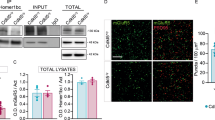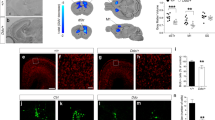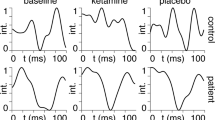Abstract
An environmental pollutant, tetrachloro dibenzo dioxin (TCDD) is known to illicit the cognitive disability and motor dysfunction in the developing brain. TCDD induced effects leading to neurodevelopmental and neurobehavioral deficit may have been defined, however underlying molecular mechanism and possible intracellular targets remain to be elucidated. In this study, we attempted to analyze TCDD-induced neurotoxic effects in the granule cells from cerebellum where certain cognitive abilities and motor function command are known to be excuted. [3H]PDBu, (phorbol 12,13-dibutyrate) binding assay indicated that TCDD induced a dose-dependent increase of total PKC activity and its induction was the aryl hydrocarbon receptor (AhR) dependent and N-methyl-D-aspartate receptor (NMDAR) independent. TCDD also caused the translocation of both PKC-α and -ε in a dose-dependent manner but associated with different receptors; PKC-α via AhR but not PKC-ε indicating an isozyme-specific pattern of the induction. Increase of the ROS formation was also observed in the cells treated with TCDD in a dose-dependent and an AhR-dependent manner. The treatment of the cells with the diamino dicyano-bis(2-aminophenylthio) butadiene (U0126, MEK-1/2 inhibitor), dizocilpine maleate (MK-801, non-competitive N-methyl-D-aspartate glutamate receptor antagonist) and vitamin E attenuated the TCDD-induced ROS production indicating that TCDD-induced ROS formation may be associated with activation of ERK-1/2 in the MAP kinase pathway or the NMDA receptor. TCDD also increased [Ca2+]i, which is associated with ROS formation and PKC activation in the cerebellar granule cells. It is suggested that TCDD activates the NMDA receptor, which may induce a sustained increase of [Ca2+]i in neurons followed by the ROS formation. Our findings may contribute to understanding the mechanism of TCDD-related neurotoxicity, thereby improving the health risk assessment of neurotoxic compounds in humans.
Similar content being viewed by others
Article PDF
Author information
Authors and Affiliations
Rights and permissions
This is an Open Access article distributed under the terms of the Creative Commons Attribution Non-Commercial License (http://creativecommons.org/licenses/by-nc/3.0/) which permits unrestricted non-commercial use, distribution, and reproduction in any medium, provided the original work is properly cited.
About this article
Cite this article
Kim, SY., Yang, JH. Neurotoxic effects of 2,3,7,8-tetrachlorodibenzo-p-dioxin in cerebellar granule cells. Exp Mol Med 37, 58–64 (2005). https://doi.org/10.1038/emm.2005.8
Published:
Issue date:
DOI: https://doi.org/10.1038/emm.2005.8
Keywords
This article is cited by
-
2,3,7,8-Tetrachlorodibenzo-p-dioxin induces apoptosis by disruption of intracellular calcium homeostasis in human neuronal cell line SHSY5Y
Apoptosis (2012)
-
Advanced Molecular Biologic Techniques in Toxicologic Disease
Journal of Medical Toxicology (2011)



